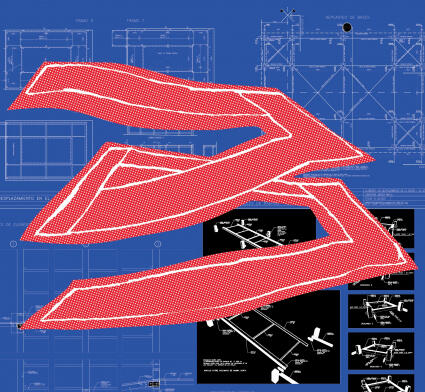JOSÉ LUIS LANDET. THE UNSTOPPABLE ASPIRATION TO THE TOTAL WORK OF ART.
It is not the first time that when I go through the work of José Luis Landet I am struck by the feeling that the perseverance, tenacity and insistence of his poetic project point to the realization of the total work of art. Perhaps it is because of the magnitude of his commitment or because of the breadth of his interests’ spectrum, but the feeling I am referring to - which in any case also finds echoes in certain formal decisions - refers to a kind of iron will to create a single work of art that combines the synthesis of all the others.

The Gesamtkunstwerk (total work of art) idea was quite popular with utopians in the early 20th century. There are the Prouns by El Lissitzsky (a visionary artist from whom Oscar Massota borrowed the notion of "dematerialization"), the Merz by Kurt Schwitters or the sculpture-architecture by Tatlin, whose famous and unfinished Monument to the Third International echoes in the sculpture-ramp that Landet installed in the center of the Marco Museum in La Boca. Like Landet, the idea of integrating the arts into a new reality, new in spatial, social and political terms, revealed to all of them. But if the revolutionary utopians of the twentieth century infused their work with the story of the great collective history, Landet starts from history with a small letter and pays special attention to the articulation - always elusive - between small personal stories and macro events.
Under the curatorship of Sandra Juárez, the exhibition at the Marco Museum extensively displays Landet's modus operandi: from the recovery, appropriation and intervention on old and forgotten landscape paintings from which he conceptually recomposes other possible landscapes to the recent invention of a kind of personal alphabet, whose spellings and signs exude pre-Hispanic airs. In this case, the recovery action turns out to be a situated operation: in the center of one of the rooms, an oil painting by Enrique Nani becomes the perfect alibi for the chromatic deconstruction of a Boquense landscape.
Landet acknowledges his dual obsession with archives and fiction. Thus, starting from an ingenious crossing between the two, he develops his poetic project, even accommodating in it winks towards his own family history. If there is a potential desire for memory in every archive, fiction (that is, art) is the fuel that Landet uses to re-ignite the detritus of history. As Luis Felipe Noé proposed back in 1965 in his book "Antestética" when reflecting on the artist's relationship with his own time: "The only way to be current is to be a seeker of forms, not of images, but of something much more total: ways of seeing ”.
José Luis Landet. “El Atajo”. From 16/04/2021 to 07/08/2021.
MARCO Museo de Arte Contemporáneo de La Boca. Av. Almirante Brown 1031, Barrio de La Boca. Buenos Aires.




